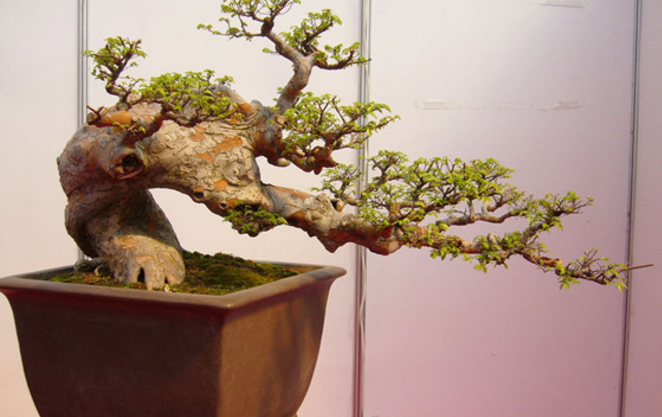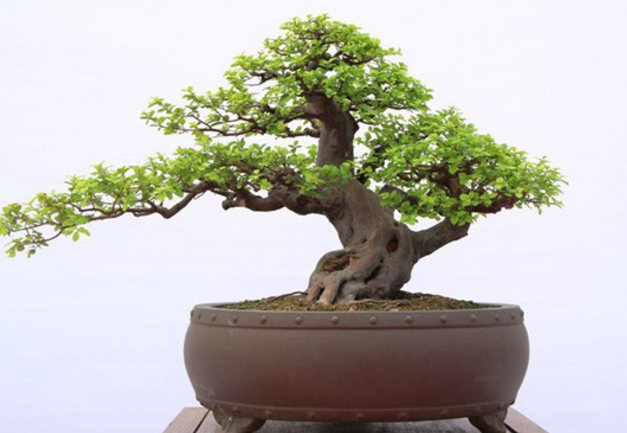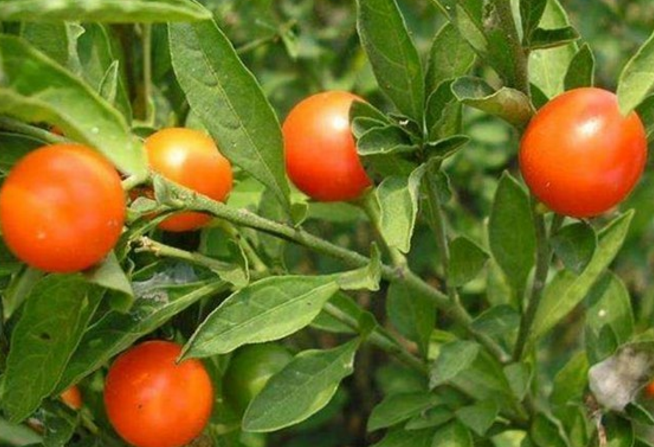How to make bonsai correctly for elm? what are the maintenance methods of bonsai?
Although elms are tall trees, they can also be made into bonsai for viewing. Elm grows and distributes in the north, mostly in valleys, hills and other places. Elm likes the sun, is not afraid of cold and drought, its root system is very developed, so its growth is extremely exuberant.

How to make bonsai correctly for elm trees
1. Preparation of elm bonsai
When making elm bonsai, you need to make preparations, including pile cultivation and pruning. Pile cultivation needs to be carried out from late autumn to early spring, planting the old piles of newly excavated elm trees on plain sand or into earthen pots for pile maintenance.
Before making bonsai, elm trees also need to be pruned to trim their roots and branches, but it should be noted that during pruning, sticky juice flows out of the cut, which may affect the survival of the plant if there is too much juice. So you need to apply some erythromycin ointment on the cut and sprinkle some fine sand.
The treated elm plant can be put on the pot and can be reasonably maintained according to the state of the elm.
2. How to shape the elm bonsai
Elm bonsai in order to be more ornamental, need to be trimmed modeling, modeling can be carried out according to the basic shape of the plant, generally do straight dry type, oblique dry type, curved dry type, cliff type, jungle type, stone type and other forms of elm bonsai. When trimming the crown, you can not only trim the crown into a natural shape, but also trim the crown into a dome-shaped tree, or the shape of a round piece. When trimming, you can first tie the wire into a basic shape, and then trim it. In addition, excessively long and messy branches need to be cut off during the growth period to make them more beautiful.
What are the maintenance methods of elm bonsai?
Elm is a good material for shaping stump bonsai.
The stump bonsai cultivated by elm trees is adorable with vigorous and simple trunks and handsome branches and leaves. Elm is a deciduous tree of Ulmaceae.
It is widely distributed in China, especially in the south of the Yangtze River, where there is a village, there must be elm. There is wild distribution in Liaoning mountain area, and home planting is also very common. Elm leaves alternate, oval, apex pointed, leaves 3-6 cm long, 1-3 cm wide, edges neatly obtusely serrated, bark straight, branchlets gray soft, widely unfolded.
The flowers are small yellow and green, and the Samara is as round as a penny. The leaves, branches and stems of elm all have certain ornamental value.
Its leaves are thin and dense, thick and hard, new leaves fresh and tender ∃ bark irregular like scales, spotted lovely ∃ branches soft and drooping, fluttering with the wind, Yiyi such as willow ∃ stem although semi-rotten, or full of holes, but still strong, straight, even old immortal. It is precisely because of the above characteristics, as a bonsai, it appears vigorous and simple, and is highly appreciated by the box landscape community.
Choose elm trees as bonsai, it is best to dig up old stumps in the mountains, cultivate them on the ground first, and then transplant them into the basin. Miniature bonsai can also be cultivated by high-pressure method. Elm is a very ordinary tree species, and mountains, forests and fields can be seen everywhere.
You can dig tree stumps in the mountains in winter and spring. Pay attention to the choice of corrugated crutches at the base, or deformed surfaces, holes in the stem, and tumor-shaped stumps in the branches. The skin of those trees is moist, and their posture cannot be neglected because of their "rough" nature and strong vitality. Because the stump is old and frail at the end of the year, and the nutrients on the basin are limited, it is necessary to strengthen conservation.
1. Elm bonsai lighting
Strengthen the plant light. Elm trees like the growing environment with plenty of light. If the sun is not enough, it will make its branches grow, the leaves look ugly, and it is easy to breed all kinds of diseases and insect pests.
2. Elm bonsai watering
Keep the elm basin soil moist, but do not accumulate water. Elm trees like to be born in wet places, but they are also afraid of water stains. Therefore, the water is watered once in the morning and evening in summer. If there is stagnant water, it needs treatment as soon as possible.
3. Fertilization of elm bonsai.
Elm trees should be fertilized properly. Fertilizing should be liquid fertilizer, peanut cake can also be broken into thumbs and buried in the soil, Xiji combined with some compound flower fertilizer. Fertilization should be applied once in early spring and early autumn, not more.
4. Pruning of elm bonsai
Keep the shape of the elm and prune regularly. The growth ability of elm is very strong, if the branches and buds are not pruned, the pile scenery will lose its ornamental value. Pruning and plastic surgery can be carried out in autumn. First cut off useless branches and diseased branches, and then prune them according to the molded or molded posture.
5. Insect pests of elm bonsai
Aphids and shell insects are the most common pests in elm. When these two pests occur, they can be sprayed with 1000 times omethoate. Elm trees can be used as bonsai for viewing, but also can be used to decorate the courtyard. However, the big tree stump should be transplanted with guest soil, and it should be carried out before sprouting leaves in winter and spring. After planting, wrap the stem with rice straw mixed with yellow mud water, and often water it to ensure that the soil and straw are moist.
[Elm bonsai] Elm bonsai conservation picture Elm bonsai production method
Yushu City is a kind of light-loving, cold-resistant, drought-resistant, water-intolerant. Can adapt to dry and cool climate, like fertile, moist and well-drained soil, can also grow in dry, barren and light saline-alkali soil, and grow faster. In particular, it is very good to use elm trees growing in the wild to make bonsai, because the old piles of elm trees growing in the wild have gradually formed different shapes after years of wind and rain or animal gnawing. The bonsai produced is also very unique. that. What is the method of making elm bonsai? Today, let's take a look at the production method and picture appreciation of elm bonsai with Xiaobian. The method of making elm bonsai introduces that the newly excavated old piles of elms should be planted in plain sand or planted in tile pots for a period of time. Maintenance is generally carried out from late autumn to spring (with the highest survival rate in two or three months before sprouting). First of all, the roots and branches should be pruned before planting. During pruning, viscous sap often flows out of the cut. If the sticky tree exudates too much liquid, it will seriously affect the survival rate of elm. At this time, we can use paint and wax to seal the cut, or we can apply a layer of erythromycin ointment or sulfonamide ointment, and then sprinkle with fine sand to prevent excessive flow of sticky sap. When the old pile of elm is planted in the basin, the soil should be compacted as far as possible, without watering, just spray clean water on the branches 1-2 times a day, and water again 3-4 days later. In the future, you can choose not to do it or water it, but the elm bonsai strictly forbids the accumulation of water in the soil, because it is easy to cause the roots to rot. When making elm bonsai modeling, bonsai should be made according to the basic form of old piles of elm trees, such as straight dry type, curved dry type, oblique dry type, water-facing type, cliff type, wind type, jungle type, stone-attached type and so on. During the production period, it should be made in the dormant period after the fallen leaves of elm trees, or in the growing period, not in the budding period. When the elm bonsai is formed, it can be planted in a small basin such as purple sand basin before germination in spring, and planted with sandy soil with loose air permeability, good drainage and rich humus. At ordinary times, it should be maintained in a place with good ventilation and sufficient light to keep the basin soil moist without stagnant water. In summer, the temperature high cut air is relatively dry, can sprinkle water to the ground around the plant, but should not spray water directly to the leaf surface, lest the leaf become bigger and lose the sense of beauty. Generally speaking, a mature thin liquid fertilizer can be applied to the elm bonsai for about 20 days. The germination of elm is very strong and the growth rate is fast. In the growing season, elm should be often pruned to cut off too long and disorderly branches in order to maintain the beautiful shape of potted plants. The best viewing period for elm bonsai is when the new leaves are just coming out, usually all the leaves will be removed in the first and middle of August, and then the management of water and fertilizer will be strengthened, and new leaves will grow again in late September to improve the ornamental value. Elm potted in winter, to move to the bright light of the cold room, can also be buried in the outdoor leeward soil, reduce watering, so that elm plants fully dormant. The pot of elm is turned every 2-3 years to make the bonsai grow exuberantly and full of vitality. Summary: the above timely introduction of the relevant information to you, after reading the introduction of the editor, I believe you also have a certain understanding of the production methods of elm potted plants. In fact, elm can also grow in arid, barren and light saline-alkali soil, its life span can reach hundreds of years, and elm has strong resistance to toxic gases such as smoke and hydrogen fluoride. [related recommendations] ☑ impatiens ☑ African chrysanthemum ☑ flower arrangement skills ☑ shell wind chimes ☑ remember grass ☑ cherry trees ☑ creative space ☑ wallpaper
Making of Elm Bonsai maintenance of Elm Bonsai
The posture of the elm is chic and straight, the bark is rough and many longitudinal cracks are dark gray, but its twigs are soft and suitable for staggered climbing, and the ancient elm stump is even more elegant. Although it seems to have long been decayed by the years, the branches and leaves still grow normally, giving people the meaning of ancient trees in spring. The production of elm bonsai some are intertwined, and even turn decay into magic, do not have a charm.
The production of elm bonsai:
1. Prepare tile pots filled with plain sand for planting newly dug old piles of elm trees, also known as "raising piles". Pile cultivation is generally carried out from late autumn to spring, and the survival rate is the highest about three months before elm sprouting.
2. the stump should be transplanted with guest soil, and it should be carried out before sprouting leaves in winter and spring. After planting, wrap the stem with rice straw mixed with yellow mud water, and often water it to ensure that the soil and straw are moist.
3. Before planting, the roots and branches should be trimmed, and there is often viscous sap flowing out of the cut, so it should be noted that the viscous tree liquid should not exudate too much, otherwise it will seriously affect the survival rate. To prevent this from happening, we can seal the cut with wax and sprinkle it with fine sand so that it can be effectively avoided.
4. Compacting the soil after planting, there is no need to water at this time, then spray clean water to the branches 1-2 times a day, and then water again 3-4 days later, and finally, as long as it is not dry, do not water, do not let the soil accumulate water.
5. According to the basic form of the old pile, the elm bonsai is modeled, and different forms of bonsai are made by banding, pruning and other forms. Modeling time does not pay special attention to the period, can be in the dormant period after falling leaves, can also be in the growing period, but must not be in the budding period to do modeling.
Conservation of elm bonsai:
1. Lighting: strengthen the illumination of elm bonsai. Elm bonsai like sunshine, shade tolerance is poor, the production of bonsai should be placed in a sunny place. Lack of sunlight, it will only grow branches and leaves very ugly, but also easy to cause insect pests.
2. Watering: although elm likes to grow in wet places, it is also afraid of water stains. Therefore, each watering should be thoroughly watered in the morning and evening at the height of summer, and the basin soil must be kept moist without stagnant water.
3. Fertilization: Elm bonsai need not be fertilized too much, as long as it is applied once each year in early spring and early autumn.
4. Pruning: because the growth of elm is very strong, we need to prune diligently to maintain the ornamental value of elm bonsai. Pruning and shaping can be carried out in autumn, cutting off useless branches and diseased branches, and then pruning.
5. Diseases and insect pests: the elm bonsai is often harmed by aphids and clams. We can spray it with omethoate diluted with 1000 times water.
Conclusion: the elm stump is not only used for bonsai viewing, but also can be used as a tree embellished in the courtyard. In the south of the Yangtze River, it has become "where there is a village, there must be elm". The above is the introduction of the editor. Will you make elm bonsai after reading it? How much do you know about its maintenance? Friends who like bonsai, plant one quickly!
- Prev

What are the common insect pests in the making methods of sparrow plum bonsai?
Finch plum bonsai is one of the seven sages of bonsai in China and one of the five famous trees in Lingnan bonsai. Sparrow plum also known as shredded rice, thorns frozen green, diagonal thorns. What are the methods of making sparrow plum bonsai? what is the production time of sparrow plum bonsai? the production time of sparrow plum bonsai is carried out in March and Meiyu season every year.
- Next

Is winter coral poisonous? can you breed indoors? what are the breeding methods?
Winter coral is a more popular ornamental fruit pot, raise a pot of winter coral at home, the fruit is round, very lovely, I believe it is a good choice for flower friends who like ornamental fruit plants. Is winter coral poisonous? can you cultivate it indoors? is winter coral poisonous? in fact, winter coral is indeed poisonous.
Related
- Fuxing push coffee new agricultural production and marketing class: lack of small-scale processing plants
- Jujube rice field leisure farm deep ploughing Yilan for five years to create a space for organic food and play
- Nongyu Farm-A trial of organic papaya for brave women with advanced technology
- Four points for attention in the prevention and control of diseases and insect pests of edible fungi
- How to add nutrient solution to Edible Fungi
- Is there any good way to control edible fungus mites?
- Open Inoculation Technology of Edible Fungi
- Is there any clever way to use fertilizer for edible fungus in winter?
- What agents are used to kill the pathogens of edible fungi in the mushroom shed?
- Rapid drying of Edible Fungi

